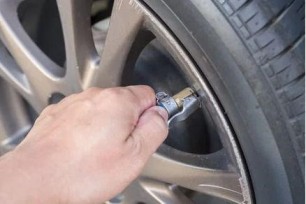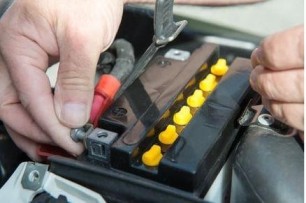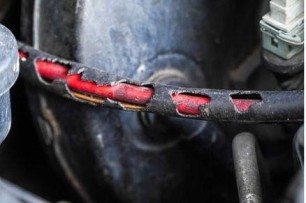General Insurance Blogs, Articles & Updates by - Magma HDI
Have us call you
- RENEW YOUR POLICY
- BUY NEW POLICY

Complete guide for learning horse riding as an adventure
Horseback riding is one of the most ancient adventure activities introduced in ancient times. And, it quickly became an integral part of every army, and until today it is a royal legacy. Adventure enthusiasts practice horse riding as a sport.
But horse riding is not as easy as it appears to be. Trusting a 1200 pounds animal to keep you safe and to cooperate with you is a daunting task. One wrong move can leave you paralyzed for the rest of your life; some mistakes can be life-threatening. But, if you are willing to take the risk to be a part of the equestrian community, you will undoubtedly have a great time learning it!
Following your passion or pursuing horseback riding as a hobby is a great start indeed! And to help you with it, we have created an essential checklist to learn horse riding as an adventure.
1. The attire:
Appropriate dressing plays a significant role in ensuring personal safety, especially when indulging in a gruelling sport like horseback riding. You require ankle-length, close-toed leather boots with a small heel to keep your feet from slipping out of the stirrups. Wear long pants to keep your legs safe from colliding against the saddle. Protecting your head is the most crucial safety aspect, so a helmet should be an essential accessory of your fit. Remember, even the horses require proper equipment. A properly fitted saddle, well-tightened cinch, a comfortable bit and bridle, and suitable hoof protection can make the sport for your horse safe and enjoyable.
2. Learn to use the reins:
Just as important it is to handle the steering of a car when learning to drive, similarly before hopping on the horse, you should understand the appropriate use of the reins. Do not hold the reins too harshly as it can hurt the horse, be gentle with it. Keep your arms at the correct angle from your elbow. The moment you master the handling of reins, you get the command over your horse.
3. Spend time with the horses:
One of the ways to be more comfortable with the horses is to spend more time with them. Try finding a part-time job at the stable or maybe just volunteer! This is how you will learn things you would not be able to learn otherwise, and horse riding will be easier for you.
Also, never forget to greet your horse first before training. It is essential to show compassion and affection to your fellow animal. Horses value the love and care their masters bestow upon them, which massively impacts the riding experience.
4. Correct your posture:
While on the back of the horse, relax and sit up straight. This will help you maintain balance and get a firmer and better hold on the horse. Relax your shoulders, and place both of your feet in the stirrup.
5. Stay hydrated:
This may seem like a small detail, but on warm and sunny days, horse riding can make you sweat profusely, therefore carry a water bottle along with you and stay hydrated.
We hope these valuable tips will guide you to kick-start your passion for learning horse riding. However, as the Equestrian community says, “Horses don’t care how much you know until they know how much you care.” Just mastering the skills is not sufficient; you need to build a mutual understanding with your horse. Trust and respect are two vital factors that should define your bond with your saddled friend.
The more time you spend training, the better your skills will get, but the chances of you getting injured increase simultaneously. Therefore, before saddling up and preparing for this extreme sport, have a personal accident insurance policy and make your experience safe and unforgettable. Don’t let the fear of falling hinder your desire to learn!
Click HERE to get the best personal accident insurance policy quotes.
Disclaimer: The information provided above is for illustrative purposes only. To get more details, please refer to policy wordings and prospectus before purchasing a policy.

Nitrogen or Air – What suits your car the most?
Tyre management has become a critical factor in maintaining the overall condition of cars. In contrast, we cannot control the factors such as weather and road conditions that affect the wheels. But we do have control over what goes inside them. And mind it, the type of air you choose to put in your tyres can have a significant impact. So, if you are in a dilemma about which air to put in your tyres, you are not alone. The most common argument in the debate ranges from nitrogen being the most prominent option.
Not sure! This blog guides you in choosing a side. We have put both the options under the test of several key factors and see how each one fits in. By the end of this blog, you will be able to decide which one is the right choice for you.
1. In terms of cost:
At most fuel stations you get free air refills and check-ups. In the case of nitrogen, it’s not free and will cost you around 40-50 rupees for a four-wheeler. Even if you don't get a free refill of air, it usually costs about 10-15 rupees making it cheaper than nitrogen.
2. In terms of availability and convenience:
Normal air is readily available. The infrastructure and storage systems required for nitrogen are not present in every region, thus bringing limitations in its availability in those areas.
*Pro-tip: If you have nitrogen-filled tyres and get a puncture on the road where there are no nitrogen filling stations. Inflate the tyre with air. Don't worry; it is entirely safe.
3. In terms of tyre pressure:
When inflating a tyre with nitrogen, 95% of pure nitrogen goes into it. Nitrogen offers more consistent tyre pressure because nitrogen molecules hardly ever pass through the small holes in the tyre's rubber, being heavier and bigger in size. A tyre filled with conventional air has approximately 20% less pressure.
4. In terms of fuel economy:
Consistent tyre pressure results in improved fuel economy. As we already know, the winner in terms of tyre pressure. It's clear that nitrogen is the frontrunner in terms of fuel economy.
5. In terms of weather conditions:
Water vapour in conventional air causes the tyre pressure to vary when the weather conditions change. When the temperature outside is hot, the air within the tyres expands, resulting in over-inflation. On the other hand, they get underinflated when the temperature drops.
Not only that, but water vapour in your tyre causes corrosion in the metal rim of the tyre. As nitrogen contains no water vapour, tyre pressure variations and deterioration are non-existent.
From all the above information, it is clear that nitrogen does hold superiority over conventional air. Conventional air is not a bad option either. Yes, if your car stays idle for a more extended period, using nitrogen will save you trips to the air refill station every time you take your car out.
Maintaining proper tyre pressure is a must whether you use nitrogen or air. Just like that, maintaining your car insurance is a must if you want to drive legally on the Indian roads. So before you even take out your car for a tyre refill, make sure you buy new car insurance and if you already have one, keep it up to date.
To buy new car insurance today, click HERE .
Disclaimer: The information provided above is for illustrative purposes only. To get more details, please refer to policy wordings and prospectus before purchasing a policy.

Efficient ways to extend and maintain the battery life of your two-wheeler
People have a habit of covering more miles on two-wheelers than cars for convenience and cost saving. One thing that every biker wants to know is how to extend the two-wheeler battery life. Long battery life indicates that your two-wheeler will function for an extended period compared to other vehicles.
But the battery gets examined only at the time of each servicing or repair. Nonetheless, it needs more attention than these few times. You do not have to be an expert in mechanics to look after a battery, nor do you have to make endless trips to your nearby garage or service centre. Just a few regular checks and maintenance will improve the quality of the battery in terms of enhancing life.
Let’s have a look at the ways you can extend the battery life of your two-wheeler.
1. Charge the battery regularly:
Allowing your two-wheeler battery to discharge before charging to maximum capacity is not a good idea since it will decrease its life and negatively influence its performance. Hence, regular charging of the battery is a must. You can check charge levels using a multimeter. Allow the two-wheeler motor to be idle for about 15 minutes to get adequate charge levels.
2. Top up the fluids in the battery regularly:
The electrolyte in a battery gets utilized whenever you charge and discharge it. Hence, keep it refilled with distilled deionized water. If you find dropping electrolyte levels during your check, make sure to refill it up to avoid replacing the existing battery. If you don’t top up the electrolyte after a few cycles, your battery will begin to break down. A traditional two-wheeler battery would have many openings to inspect and fill electrolyte unless it is sealed.
3. When not in use, disconnect the battery:
Plugged-in batteries lose power, and hence not practising that might help you get the most out of your batteries. If you are not planning to use your bike for an incredibly long time, it is recommended that you disconnect the batteries to avoid power loss. And when you do, make sure to keep the batteries in a warm, dry location.
4. Look for any unsecured connections:
It’s crucial to scrutinize the batteries regularly to ensure there are no loose connections. Check for connectivity issues, scratches, and short-circuits of wires regularly to avoid long-term consequences. Internal wiring connects all sections of your two-wheeler to the battery, and weak connections might cause your two-wheeler to struggle to start. Some wiring errors might result in serious problems that affect other essential parts and the functioning of a two-wheeler.
5. Don’t put too much strain on the battery:
High-capacity lighting and LEDs that you connect to your two-wheeler put a lot of loads on the battery. As a result, it may cause the battery to drain and eventually lead to its termination. Ensure that the accessories you install don’t exceed the battery’s capacity.
On a conclusive note, for the smooth performance and uninterrupted functioning of your two-wheeler, keeping the batteries up-to-date is a crucial thing. Your two-wheeler derives its power from the battery, and any fault to it can bring the vehicle to a halt. Prepare for such uncertainties much in advance by investing in the zero depreciation feature of the regular 2 wheeler insurance. Taking good care and being careful is not just sufficient. Buying suitable 2 wheeler insurance can add an extra layer of protection.
To get two-wheeler insurance, click HERE .
Disclaimer: The information provided above is for illustrative purposes only. To get more details, please refer to policy wordings and prospectus before purchasing a policy.

Reasons why underage driving is posing a threat to the lives of other commuters
Learning to drive is a thrilling moment for teenagers. Transitioning from remote-control cars to handling the steering physically boosts the adrenaline for every youth. But this situation can be daunting for the parents. Statistics suggest that parents have valid reasons to be concerned because underage drivers are more likely to be involved in a car accident than any other age group.
Teenagers have better vision, faster reaction timing, and an acute sense of hearing than adults. Then why are accidents more common in this specific age group? In this article, we share the top reasons for accidents involving teen drivers;
1. They think differently, to begin with:
Teenagers are still maturing, and their brains are highly active. Studies have shown that the part of their brain that supervises planning and controlling impulses is still developing. Hence they’re more prone than adults to indulge in dangerous activities and struggle to evaluate the consequences of their actions while driving.
2. Lacking experience:
Teenage drivers are unprepared to make the judgments that drivers must make to be safe. They are still learning the road laws, traffic discipline, and the fundamental operations of a car. Furthermore, being impulsive, as mentioned above, combined with inexperience, lead to disastrous results.
3. Distractions are everywhere:
From smartphones, talkative co-passengers (mostly peers), or the latest track by their favourite artist blasting on the music system, the list goes on for the things that distract the young drivers while driving.
Teenage drivers may be cautious and stay focused to avoid distractions in their early stages of driving. However, the more comfortable they get behind the wheel, the more likely they are to participate in activities like texting on the go, scrolling through their social feed, or searching for a song.
4. Driving under the influence of intoxication:
As they’re underage, they are not legally allowed to drink. If you think from a teenager’s perspective, the safest place to chug some beer is in the car. Driving under the influence of a substance is a significant threat to other commuters as the mistake can adversely affect the lives of many.
5. Seatbelts? Not a need:
According to statistics, youngsters take wearing seatbelts casually. This casual approach leads to injuries and increases the chances of life-threatening situations in case of an accident.
If you're a parent and reading this article, imagining such situations can make you worry. Your best bet is to create a healthy environment with your children by laying out driving rules and ensuring they follow them. Your kids often take you as an example when they drive; make sure you set a good example for them by driving responsibly. Tell them about the possible consequences of their actions and the trouble they can get into. Also, make it clear that they cannot drive without holding a valid driving license.
Many things can be taught to your young one to get started, like wearing a seat belt, avoiding speeding, especially during the darker hours of the day. To give your car additional protection, make sure you invest in good private car insurance. This will help you adhere to the mandatory laws of our country and cover your loved one in case of an accident.
Click HERE to buy new private car insurance today.
Disclaimer: The information provided above is for illustrative purposes only. To get more details, please refer to policy wordings and prospectus before purchasing a policy.

Best tips to protect your car from rodents
At some point in time, you've consciously or subconsciously imagined worst-case situations for your car, including accidents, terrible weather encounters, or theft. Ever wondered about infestation attacks on your car?
Underneath your engine, it's dark and warm - a healthy and ideal environment that suits these little creatures. The chance of your car getting infested by rodents drastically rises during these colder months as your car acts as a shield for them against predators and insulates them from the cold.
Rodents often cause significant damage to your vehicle by eating wires, defecating, creating nests, and accumulating food inside your engine. To save you from the trips to pest controls and spending your hard-earned money on repairing the damaged parts, we've put out some pointers that will help you in keeping the rodents off of your vehicle.
1. Keep your car moving:
Rodents like to make their base into cars that don't often move. Taking your car out once in a while can help. A moving vehicle won't give them the time to get comfortable, and they are less likely to make the car their camp.
2. Clean your car thoroughly:
Rodents will build their nests in places where they can readily collect food. To begin, make sure your car is free of any dropped food. Vacuum through your vehicle and collect each bit of fallen food, no matter whether it's the snack you ate while stuck in traffic or it's your dog's food. Get rid of the leftovers and trash thoroughly.
If, unfortunately, your car was already home to rodents, the scent of them remains. This creates a possibility that the same creature or someone is attracted to the smell and returns. Be sure to get rid of all the droppings, nesting material, and chewed-up debris.
3. Have an anti-rodent parking space:
Keeping food and water off your garage is equally essential. Rats like to relax and feed in locations that are dark, quiet, and appear to be safe. They dislike being in open spaces. You don't want to have any hiding spots that aren't required. You should keep grain sacks, food containers, and everything else of a similar kind away from your car and the parking spaces.
4. Keep the hood of your car open:
When your car stays parked for an extended amount of time, leave the bonnet open. Additionally, leave a light on above the bonnet during the night time. As we mentioned earlier, rodents love dark places. Keeping the engine area bright makes them less likely to settle in.
*Pro-tip: Focus some lights on your tyres and place traps beside them; this will help keep rodents at bay. Rodents generally enter the vehicle engine climbing through the tyres.
5. Insure your car against animal attacks:
Car insurance helps safeguard the car and the driver and protects against the damages caused by animals, including rodents. The stress on your pockets caused due to the repairs of chewed wires can be immense. Control it by getting comprehensive car insurance today to add value to your car!
Rodent attacks are a common problem in India that frustrates car owners. They bring in unexpected damages and financial losses and, most importantly, leave the car inoperative at the time of need. Follow these tips mentioned above to stop the activities of these little trouble makers early on. If you've already faced an issue with them, take care that you don't repeat the same mistakes.
Click HERE to get the best car insurance in the market.
Disclaimer: The information provided above is for illustrative purposes only. To get more details, please refer to policy wordings and prospectus before purchasing a policy.

Eight advantages of a frugal lifestyle for improved living
Frugal living contemplates a lifestyle in which a person is cautious about spending money and utilizing available resources. Many people mistake frugal living for cheap living; first let us clear the air about it. Even though the ultimate aim of both the groups is to save money, being frugal and cheap are two distinct concepts that possess different approaches. Individuals who prefer going cheap are solely motivated by the price tag, while frugal individuals prioritize the value of service over its cost.
Do you love savings but don't want to be inferior to your life priorities? Here are the 08 benefits of a frugal lifestyle.
1. It helps you understand your priorities:
Frugality enhances your outlook toward the goods you buy. When you spend money for a month on only the genuinely essential things, you'll be astonished at how simple it is to identify your priorities.
2. More time for your passion:
Once you start living frugally, your financial status improves with each economic decision. Once this is achieved, you'll move further away from a cycle of pay-checks. This is how you start enjoying financial freedom.
3. You become more eco-friendly:
You do your bit for mother earth when you make frugal choices. It's straightforward. Your only essential shopping habits help reduce the carbon footprints. The most noticeable environmental benefit of less shopping is the less waste created by it.
4. Declutter your life:
We buy goods in our consumerism-driven society that we don't really need. When you attempt to be a frugalist, you only spend on what you actually need and ignore the rest. When you have less stuff to deal with, you'll feel less burdened and stressed. This way, a frugal lifestyle will improve your standard of living.
5. Gain your peace of mind:
When the going gets tough, frugal living allows you to handle it better. Losing your salary isn't as frightening if you live a low-cost lifestyle, have a rainy day fund at your disposal. It is simple to get out of debt and develop a financial cushion to fall back on when you live frugally.
6. Improves your happiness quotient:
With less stress and worries, you invite extra happiness in your life. Also, it's essential to understand that real happiness is not materialistic. Next time you get an urge to go on a shopping spree, try volunteering for a social cause and measure your level of satisfaction. You'll feel great.
7. Planning early retirement:
Your dream of taking early retirement can be a reality with a frugal lifestyle. As you'll have a financial cushion for you, it will be easier for you to say goodbye to your working days.
8. More money to add to your savings and expand investments:
It can amaze you to realize the amount of money you can save once you start making economic choices. Every time you make a frugal decision, the money you will save can be invested into your portfolio of socks, repay your loans, buy essential general insurance etc.
Your quest to live a simpler life gets a new definition with frugality. It is an effective strategy for sailing your financial ship and bringing much-needed peace of mind as well as a sense of security. Remember, you don't have to cut short on your essential needs, such as a healthy lifestyle, home, travel or general insurance. Instead, you are required to be mindful of your spending on every action. The key to the door of happiness is in your hands. Unlock it!
Click HERE to know more about general insurance.
Disclaimer: The information provided above is for illustrative purposes only. To get more details, please refer to policy wordings and prospectus before purchasing a policy.

Eleven ways a traveler can reduce his carbon footprint
Climate change is not a new threat to our planet, and we all are well aware of it. Large amounts of greenhouse gas emissions endanger wildlife and nature, and the bare minimum we can do is watch our actions, refine them, and reduce damage as much as possible. As per the studies, airlines alone are one of the biggest reasons of carbon emissions for the environment.
At the time of severe climate challenges, both the tourism industry and travellers are adopting green ways to minimise their carbon footprints. Most conscious travellers recommend embracing a travel culture that is environment-friendly and sustainable. As a traveller, you can always opt for a minimal carbon footprint and a sustainable form of travel.
We recommend following travel practices that help contribute towards zero carbon footprints:
1. Flying to nearby destinations should be shunned; instead, use public transportation like buses or trains. Take flight only if the distance is far, and make sure to book flights with no layovers.
2. One-time use of plastic products such as water bottles will increase the weight and the waste. Instead, carry mostly reusable items and do not pack heavy.
3. Choose efficient modes of transport to travel to your destination. Simply do walking, ride a bike, or take local public transportation when sightseeing.
4. Avoid looking for your traditional food abroad and try the local cuisine. The imported food items emit a tremendous amount of carbon footprint.
5. Purchase meaningful, valuable, and authentic local souvenirs only. Avoid mass-produced clothes, plastic trinkets and cheap articles made on an assembly line in third countries.
6. Rather than packing or purchasing new equipment for your adventures, look for options to rent it on location. Again, sharing is better than possessing for the environment.
7. Stay in an environment-friendly local hotel and contribute to the local economy. Avoid unnecessary use of modern amenities if you have greener options.
8. Plan the tour in a manner that does not include exploitation of the wildlife and the life of the residents - question yourself about the ethics and effectiveness of each trip you take.
9. Keep an eye out for the local resources. The holiday attitude should not be an excuse to overlook how your presence negatively affects the people and environment in the area.
10. Evidence shows that travel makes individuals more sympathetic and creative and stimulates them to engage more actively in intercultural contexts. Be considerate to your purchasing if you want to reduce your carbon footprint.
11. Support projects and organisations that promote sustainable tourism. You may also donate to non-profits that advocate for climate action and help the tourist sector transition to a carbon-free future.
Travel has the power to change a person’s perspective of everything literally, and one should never discontinue it. However, during your journey, you should ensure that it preserves destinations and that our future generations have the opportunity to travel too.
With the planet's future at stake, conscious travel is the key to contributing to a better local environment and communities. But Remember to be sensible enough to protect your travel as well from any mishap while you undertake these trip. Always ensure general insurance that covers your travel you are planning next. You can easily get general insurance online quotes and purchase one for yourself before starting that meaningful trip.
There is no planet B, and with little effort from each individual, we can reverse the clock on this. So, let us travel green!
Get quick general insurance online quotes HERE .
Disclaimer: The information provided above is for illustrative purposes only. To get more details, please refer to policy wordings and prospectus before purchasing a policy.

Five trending technologies that will avoid distractions while driving
According to a report centered around accidents in India, The Nation has lost 1.3 million lives in road collisions in the previous decade alone, with another 5.3 million badly injured. With one collision per minute and one fatality every four minutes, India has the most significant number of road accident deaths. Despite having just 1% share of the world's vehicles, India estimates more than 10% of worldwide road accident deaths. These figures are alarming and must be addressed with urgency.
While most accidents occur due to distractions while driving, the automobile industry is developing innovative technology to keep drivers on alert mode to reduce accidents that plague the country.
Today, we'll take you through the exciting technology proving to be the difference between life and death.
1. Driver Fatigue Detection system:
Fatigue while driving is frequently the cause of some catastrophic accidents. However, it is possible to notice the early indicators of drowsiness before a fatal scenario occurs. The driver fatigue detection system can monitor steering motions and alert drivers when it is time to take a break.
The technology works by tracking the driver's steering behaviour as soon as they start the trip using an algorithm. It then detects variations throughout long journeys, as well as the driver's level of tiredness. Typical symptoms of fading focus include periods when the driver is hardly steering, followed by modest yet rapid and sudden steering adjustments to maintain the automobile on course. If that level surpasses a specific threshold, an indicator appears on the digital panel to alert drivers that they need a break.
2. Voice controls and Hands-free connectivity:
Nowadays, automobile manufacturers provide Bluetooth connectivity that allows you to communicate and control smartphones and media devices without operating them physically. This way, the driver doesn't have to take their hands and eyes off the wheels. Various studies also prove that there is less possibility of mishaps when the driver's car has a hands-free electronic system installed in their vehicle.
3. Automatic Emergency Braking system:
The Autonomous Emergency Braking system (AEB) automatically slows or even brakes a vehicle when it senses an approaching collision with an object. The most basic AEB systems can identify automobiles, but more complex systems can detect pedestrians, making them extremely helpful in urban settings.
4. Local mobile phone jammers:
The system uses radio-frequency identification (RFID) technology to determine whether a vehicle is moving and the driver is trying to use the cell phone. The technology then activates a local mobile jammer, which disables just the driver's device while enabling passengers to continue calling and texting as usual.
5. Lane departure warning system:
A deadly situation might emerge if a car strays out of its lane. Lane Departure Warning, abbreviated as LDW, identifies the road up to 40m ahead of the vehicle using specially designed cameras. If the driver is on the verge of straying out of the lane by mistake, the system will alert them via audio or haptic vibrations.
These technologies are indeed helping to make the roads safe for all of us. The testing of more prototypes is in progress to be implemented soon. While it may be you or your driver taking control of the steering, mishaps still can happen even with all these technologies in place to assist you. As the saying goes, "Hope for the best and prepare for the worst", show your preparation by covering your car under ideal car insurance. It's not only a wise investment in car insurance but also mandatory by National vehicle law.
Click HERE to buy the best car insurance available in the market.
Disclaimer: The information provided above is for illustrative purposes only. To get more details, please refer to policy wordings and prospectus before purchasing a policy.


